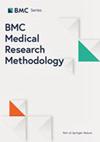Modelling wound area in studies of wound healing interventions
IF 3.9
3区 医学
Q1 HEALTH CARE SCIENCES & SERVICES
引用次数: 0
Abstract
Experimental studies of wound healing often use survival analysis and time to event outcomes or differences in wound area at a specific time point. However, these methods do not use a potentially large number of observations made over the course of a trial and may be inefficient. A model-based approach can leverage all trial data, but there is little guidance on appropriate models and functional forms to describe wound healing. We derive a general statistical model and review a wide range of plausible mathematical models to describe wound healing. We identify a range of possible derived estimands and their derivation from the models. Using data from a trial of an intervention to promote ulcer healing in patients affected by leprosy that included three measurement methods repeated across the course of the study, we compare the goodness-of-fit of the models using a range of methods and estimate treatment effects and healing rate functions with the best-fitting models. Overall, we included 5,581 ulcer measurements of 1,578 unique images from 130 patients. We examined the performance of a range of models. The square root, log square root, and log quadratic models were the best fitting models across all outcome measurement methods. The estimated treatment effects magnitude and sign varied by time post-randomisation, model type, and outcome type, but across all models there was little evidence of effectiveness. The estimated effects were significantly more precise than non-parametric alternatives. For example, estimated differences from the three outcome measurements at 42-days post-randomisation were − 0.01 cm2 (-0.77, 0.74), -0.44 cm2 (-1.64, 0.76), and 0.11 cm2 (-0.87, 1.08) using a non-parametric method versus − 0.03 cm2 (-0.14, 0.06), 0.06 cm2 (-0.05, 0.17), and 0.03 cm2 (-0.07, 0.17) using a square-root model. Model-based analyses can dramatically improve the precision of estimates but care must be taken to carefully compare and select the best fitting models. The (log) square-root model is strongly recommended reflecting advice from a century ago.在伤口愈合干预研究中模拟伤口面积
有关伤口愈合的实验研究通常使用生存分析和时间来得出结果或特定时间点伤口面积的差异。然而,这些方法并没有利用试验过程中潜在的大量观察数据,因此可能效率不高。基于模型的方法可以利用所有试验数据,但在描述伤口愈合的适当模型和函数形式方面几乎没有指导。我们推导出一个通用统计模型,并回顾了一系列描述伤口愈合的合理数学模型。我们确定了一系列可能的推导估计值及其从模型中的推导。我们利用麻风病人溃疡愈合干预试验的数据(该试验包括在整个研究过程中重复使用三种测量方法),使用一系列方法比较了模型的拟合度,并使用拟合度最高的模型估算了治疗效果和愈合率函数。总体而言,我们对来自 130 名患者的 1,578 张独特图像进行了 5,581 次溃疡测量。我们检查了一系列模型的性能。在所有结果测量方法中,平方根、对数平方根和对数二次方模型是拟合效果最好的模型。估计的治疗效果大小和符号因随机化后的时间、模型类型和结果类型而异,但在所有模型中,几乎没有证据表明治疗效果有效。与非参数替代方法相比,估计效果要精确得多。例如,使用非参数方法与使用平方根模型相比,随机化后 42 天的三项结果测量的估计差异分别为-0.01 平方厘米(-0.77, 0.74)、-0.44 平方厘米(-1.64, 0.76)和 0.11 平方厘米(-0.87, 1.08),而使用平方根模型则分别为-0.03 平方厘米(-0.14, 0.06)、0.06 平方厘米(-0.05, 0.17)和 0.03 平方厘米(-0.07, 0.17)。基于模型的分析可以显著提高估算的精确度,但必须注意仔细比较和选择最佳拟合模型。强烈推荐使用(对数)平方根模型,这反映了一个世纪前的建议。
本文章由计算机程序翻译,如有差异,请以英文原文为准。
求助全文
约1分钟内获得全文
求助全文
来源期刊

BMC Medical Research Methodology
医学-卫生保健
CiteScore
6.50
自引率
2.50%
发文量
298
审稿时长
3-8 weeks
期刊介绍:
BMC Medical Research Methodology is an open access journal publishing original peer-reviewed research articles in methodological approaches to healthcare research. Articles on the methodology of epidemiological research, clinical trials and meta-analysis/systematic review are particularly encouraged, as are empirical studies of the associations between choice of methodology and study outcomes. BMC Medical Research Methodology does not aim to publish articles describing scientific methods or techniques: these should be directed to the BMC journal covering the relevant biomedical subject area.
 求助内容:
求助内容: 应助结果提醒方式:
应助结果提醒方式:


